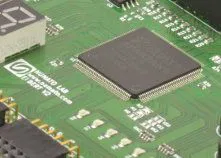Table of Contents:
Older designs of electroacoustic amplifiers were first based on electron tubes and later on discrete transistors. With the development of semiconductor technology, it was possible to create power amplifiers in the form of integrated circuits, which require relatively few external components to operate giving very good sound quality – meet the already cult among electronics-melomaniacs LM3886 audio power amplifier integrated circuit!
LM3886 - basic information
The LM3886 IC was designed and put into production by Texas Instruments as part of a series called Overture. This integrated power amplifier, allows a continuous RMS power of 68W with a 4Ω output load and 38W RMS for an 8Ω load with a THD + N ratio of 0.1% in the operating band from 20Hz to 20kHz. This circuit uses SPiKe technology, according to which a built-in protection circuit sets the amplifier within an acceptable temperature range for proper and safe operation, which sets the LM3886 apart from many discrete and hybrid designs. Thanks to this, we are assured protection of the circuit also against other undesirable conditions, such as short circuits, uncontrolled operating temperature, or overvoltages coming from the power supply.
The LM3886 amplifier features an excellent signal-to-noise ratio, exceeding 92dB with a typical noise figure of 2.0µV. In addition, the LM3886 features an exceptionally low THD+N harmonic content ratio of just 0.03% at maximum power for the rated load across the entire operating band, and provides excellent linearity with a typical IMD (SMPTE) ratio of 0.004%. This makes ita popular choice among DIY builders.
LM3886 - key features and technical parameters of the circuit
- Average continuous output power: 68W for 4Ω load at ±28V supply voltage
- Average continuous output power: 38W for 8Ω load at ±28V supply voltage
- Average continuous output power: 50W for 8Ω load at ±35V supply voltage
- Instantaneous peak output power: 135W
- Signal-to-noise ratio: S/N R ≥ 92 dB
- Input mute function (MUTE)
- Protection of the amplifier output against shorting to ground or to the power supply rails through an internal current limitation circuit
- Protection of the amplifier output against overvoltages from inductive loads
- Protection against under-voltage supply, which prevents the occurrence of internal repolarization when |VEE| + |VCC| ≤ 12 V, thus eliminating transients when switching the circuit on and off
- TO-220 housing with 11 leads for through-hole mounting (THT)
- Supply voltage range from 20V to 94V
LM3886 - circuit pinout description
Numerical order ordered:
- V+ – positive supply voltage rail input
- NC – lead not connected
- OUTPUT – output for the load (speaker)
- V- – input of negative rail of supply voltage or ground (for single supply)
- V+ – positive supply voltage rail input
- NC – lead not connected
- GND – ground
- MUTE – mute the amplifier input during power on and off
- VIN- – inverting input
- VIN+ – non-inverting input
- NC – lead not connected
LM3886 - MUTE function
The MUTE function of the LM3886 circuit allows the user to mute the output of the amplifier by applying a control current of 0.5mA to pin number 8 – the implementation of the MUTE circuit involves selecting an RM resistor with respect to the negative rail of the supply voltage in conjunction with a switch. When the switch is open, it cuts off the current flow to pin number 8 from the negative rail of the supply voltage or ground, which presents the LM3886 into mute mode. The value of the RM resistance, is calculated from the following equation:
RM*(|VEE – 2.6V|)/I8; where I8 => 0.5mA
LM3886 - undervoltage protection
When the power supply voltage is turned on, an under-voltage protection circuit brings the appropriate voltages to the power supply rails before they are applied to the various internal circuits of the LM3886 in such a way that no DC output spikes occur. After shutdown, the LM3886’s output is automatically shorted to ground beforehand in such a way that oscillations or other transients do not occur on power loss.
LM3886 - overvoltage protection
The LM3886 IC contains a built-in surge protection circuit that limits the output current to about 11A peak, while providing voltage suppression, but not through the built-in surge diodes. The voltage suppression effect is roughly the same, although the output transistors of the power stage are designed for alternating (push-pull) switching allowing the conduction of currents with large amplitude difference changes over short time intervals.
LM3886 - thermal protection
The LM3886 chip uses SPiKe technology, which relies on the built-in special ladder of transistors that act on the thermal overload of the LM3886 amplifier to protect it from momentary peak temperature loads in a dynamic manner. When the operating temperature reaches 165*C, the LM3886 circuit shuts down automatically. The circuit returns to possible operating conditions again when the temperature of the structure drops to about 155*C, but if the temperature rises again, the shutdown will occur again at 165*C. Therefore, the device can heat up to a relatively high temperature level if the fault is temporary, but a permanent fault will cause the circuit to shut down on a basis modeled after a Schmitt flip-flop, between 155*C and 165*C. Therefore, choose a heat sink or an additional fan to force the cooling circuit, according to the thermal operating conditions of the target application.
How useful was this post?
Click on a star to rate it!
Average rating 0 / 5. Vote count: 0
No votes so far! Be the first to rate this post.




















